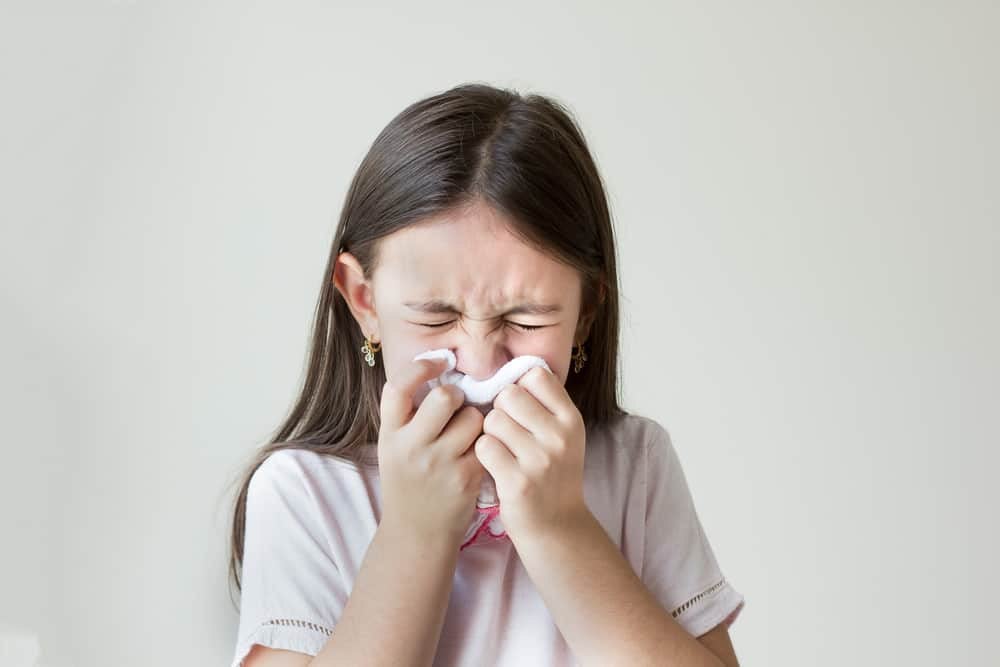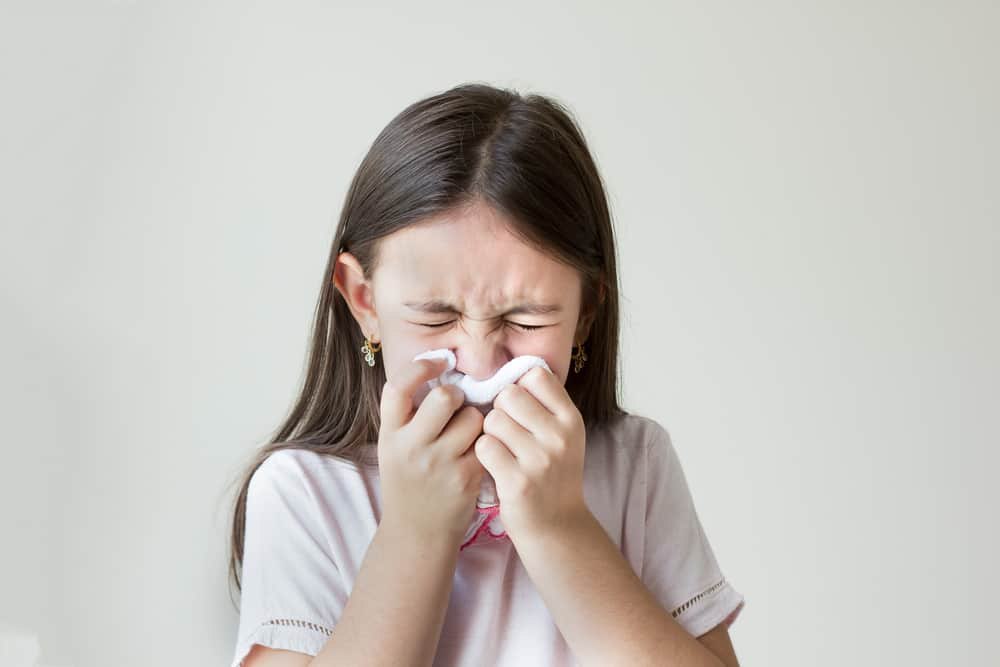Allergies in Children: Allergic Rhinitis Symptoms, Causes, Diagnosis, and Treatment
November 28th, 2022 | 5 min. read

No parent wants to see their children suffering an illness, but it can be nearly impossible to avoid environmental allergens in regions like Houston. Allergies may occur seasonally or year-round, and are seen more often in children with a family history of allergies. While you cannot control all the exposures your child will experience, understanding the symptoms to look out for can help with early detection and treatment.
schedule an appointment today to get your Child's Allergies treated
Please schedule an appointment today at any of our 10 convenient locations in Houston, TX.
What is allergic rhinitis?
Hay fever, seasonal allergies, or nasal allergies are all terms used to describe allergic rhinitis. Allergic rhinitis affects approximately 50 million people each year, according to The American College of Allergy, Asthma & Immunology, and is the most common form of allergy in children we see at our ENT clinic throughout Houston. Allergic rhinitis is caused by an allergic reaction to inhaled allergens like pollen, weeds, grasses, and trees - all of which are difficult to avoid if they grow where you live.
A healthy immune system works to fight off allergies that you have been exposed to, however, those with allergic rhinitis experience an allergic reaction causing symptoms that can be difficult to live with.
Symptoms of allergic rhinitis
The immune system works to protect the body against bacteria and germs to keep you healthy and safe. When the immune system mistakes common allergens, like pollen, dust, or mold, as something harmful, it can result in a slough of symptoms affecting many parts of the body.
Symptoms of allergic rhinitis include:
- Itchy, watery, and red eyes
- Sneezing
- Cough
- Sore throat
- Upset stomach
- Dark circles under the eyes
- Atopic dermatitis or eczema
- Asthma
- Wheezing
- Swelling in the airway or throat
Symptoms of allergic rhinitis range from mild to severe depending on the length of exposure and immune system response. When left untreated, symptoms have the potential to become life-threatening, making breathing difficult due to airway swelling. Contact emergency services immediately if you experience difficulty breathing following an exposure.
What causes allergic rhinitis?
Allergic rhinitis is an allergic response to allergens in the environment. In areas like Houston, ragweed, a common cause of allergic rhinitis, grows rapidly from August through November — often up until the first cold front.
Exposure to irritants, like perfumes and strong odors, can mimic signs of allergic rhinitis, however, allergic rhinitis is caused by inhalation of the allergen rather than simple exposure.
Allergens responsible for allergic rhinitis include:
Pollen
Pollen is a powdery substance produced by seed plants that fluctuate throughout the year. This airborne allergen is easily spread and inhaled, even without knowing. It is commonly produced by trees, like the Cedar Elm, Ash, Elm, Pecan, Oak, Pine, and Hackberry. Living in a region that is highly populated with these trees, like the Houston area, can make seasonal allergies like this difficult to avoid.
Grass
Grass counts that account for allergic rhinitis are highest from March through July. The most common grasses that cause seasonal allergies include BlueGrass, Red Top, Bermuda, Timothy, Sweet Vernal, and Bahia.
Trees
Trees produce allergens at various times throughout the year which results in seasonal allergies.
- Juniper: causes nasal discharge, congestion, and sneezing
- Box elder: more prevalent January through May and causes springtime allergies
- Oak: a common cause of spring allergies that cause itchy, watery eyes, cough, runny nose
- Birch: mimics flu-like symptoms but does not produce a fever
Mold
Mold production increases during periods of increased rainfall as it leads to an increase in moisture in the air. In Houston, rainfall increased during the fall resulting in an overabundance of mold counts. Heavy rainfall alongside high humidity levels in Houston makes it nearly impossible to experience symptom relief without treatment.
Pet dander
Animals leave behind microscopic flakes of skin that can initiate an allergic reaction. Pet dander remains in the air for longer periods than other allergens due to its small, lightweight feel, which makes it more likely to be inhaled.
How is allergic rhinitis diagnosed?
Allergic rhinitis is diagnosed by a medical professional after a comprehensive medical history is assessed and a physical examination is performed. While additional testing is not always necessary, an ENT doctor may recommend getting a skin-prick test to assess the underlying allergen causing a reaction.
A total IgE test is a common blood test used to measure the total amount of IgE antibodies present in the blood. Immunoglobulin E antibodies are produced by the immune system to protect the body against foreign invaders like pet dander, pollen, and dust mites. Unlike a total IgE test, a specific IgE test is used to evaluate the amount of IgE antibodies present when exposed to a specific allergen.
The role of an ENT doctor and allergist in Houston
A primary physician often provides a referral to an ENT for patients suffering from problems involving the ears, nose, and throat - including sinuses. An ear, nose, and throat specialist can provide both surgical and nonsurgical treatment. When there is a concern of allergic reaction to environmental factors, you will likely be referred to an allergist to further assess the cause of symptoms.
An allergist specializes in diagnosing, treating, and preventing allergic reactions to environmental factors, dust, pet dander, and many other things through non-surgical treatment. Allergies may cause year-round or seasonal symptoms, but with the help of a specialist, relief is possible.
Treatment options for allergic rhinitis in children
The most obvious choice to combat an allergic reaction is to avoid the allergen. This is easier said than done when the allergen is produced by trees, grasses, or weeds. Experts recommend avoiding hot spots during seasons of high production, and using other measures to eliminate other exposures.
Manage pet dander
Millions of people have animals in their homes — even those that are allergic. Pet owners can reduce the risk of an allergic reaction by frequently grooming their pets including washing and thoroughly brushing. Those who own a cat should consider wearing a mask when handling the litter box or having someone else clean the box when available.
Eliminate dust
Most people think they have eliminated dust by dusting but this is only the start of eliminating dust in your home. Dust can get trapped in even the smallest places and even when it looks clean, dust particles may be left behind. It is recommended to remove all carpets in the home, get rid of feather pillows and down blankets, and use an air purifier to clean the air in your home.
Take medication as advised by an ENT specialist
Medication solutions for allergic rhinitis include antihistamines, intranasal steroids, and allergy injections.
- Antihistamines: Antihistamines are commonly used to treat seasonal or year-round allergies. Antihistamines, often found over the counter, work to block histamines released by inflammatory cells during an allergic response.
- Intranasal steroids: Intranasal steroids help to relieve nasal congestion and are often used in combination with antihistamines Unlike antihistamines, intranasal steroids require a prescription from a medical professional. When applied topically to the nasal mucosa, intranasal steroids suppress the body’s inflammatory response to inhaled allergens like pollen and mold.
- Allergy shots: Allergy injections are extremely effective in treating allergic asthma and allergic rhinitis. Immunotherapy through allergy shots can reduce symptoms associated with exposure to an allergen. Each shot delivers a tiny amount of specific substances that trigger an immune response, allowing the body to stimulate a reaction without causing a full-blown allergic reaction. Studies show 85% of people who suffer from allergic rhinitis experience fewer symptoms when undergoing allergy shot treatment.
Treating your child's allergic rhinitis at Houston ENT
At Houston ENT and Allergy, your care is our top priority. Our experts work alongside each other to provide a swift diagnosis, unmatched patient care, and education to reduce the frequency of attacks. More than 6 million children are affected by allergic rhinitis each year, with these numbers growing exponentially in the last 50 years.
Our specialists on staff include Otolaryngologists, facial plastic and reconstructive surgeons, allergists, audiologists, and sleep medicine physicians. Allergic rhinitis does not discriminate based on age, race, or gender, which is why we work to provide the best care available to everyone.
Contact us today at Houston ENT for your allergy needs.
Topics:


